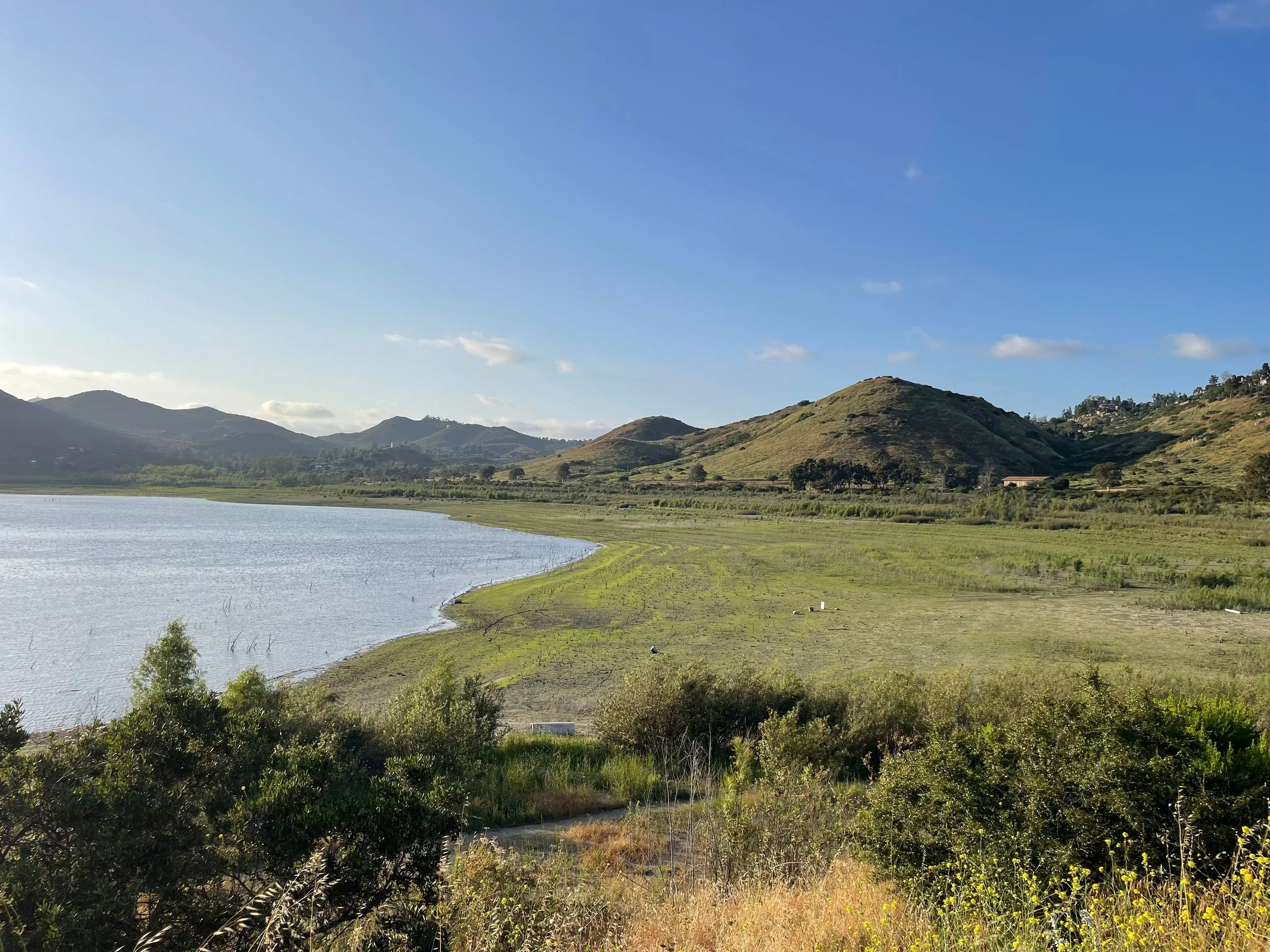Community and Nature
Lake Hodges
Hiking, birding, fishing, kayaking, windsurfing, photography, picnicking…
The Pinnacle community is built into the valley and hillside of Santa Fe Valley and adjacent to substantial acres of Open Space Preserve. This Open Space is part and integral to the vision of the County of San Diego, whereby belts of dedicated greenery allow native species of plants and animals to live, migrate, and flourish without human disturbance. These Open Space lands are part of the Del Dios-Lake Hodges corridor and are set aside for the viewing enjoyment of all, and Pinnacle is proud to work with San Diego County, both California and Federal Fish and Wildlife Agencies, and the San Diego Foundation to help maintain this vision. As part of every home sale, a one-time fee is required that helps fund our Open Space Endowment in perpetuity and provides our environmental partner Endangered Habitats Conservancy with the resources to carefully nurture, study, and safeguard these precious lands. Pinnacle considers it a deep privilege to work with such dedicated and vital San Diego groups.
History and legacy of this land
Kumeyaay / Digueño
Engraving by Arthur Carl Victor Schott, Sorony & Co., 1857
In the early 1900s, the region currently served by the Olivenhain Municipal Water District (OMWD) was inhabited by three distinct Native American cultures: the San Dieguito, La Jollan, and Diegueño tribes, each existing during different periods.
During the early 1800s, the land that now encompasses Olivenhain was part of Mexico's territory. In 1842, Rancho Los Encinitos was granted by the Mexican government to Andreas Ybarra, who constructed an adobe house. The remnants of this structure still stand near Stagecoach Park in Carlsbad.
The settlement of Olivenhain began in 1884 on a parcel known as Rancho Las Encinitas, with 25 families establishing the community. This group of 67 German settlers, whose descendants include some present-day residents, gave rise to the community that OMWD is named after. "Olivenhain," of German origin, translates to "olive grove" and is pronounced Oh-Lee-Ven-Hine.
Olivenhain
Reservoir and Dam
During the 1950s, a decline in farming activity and the introduction of imported water to Southern California gradually transformed the Olivenhain area into a residential community.
During the building of the Pinnacle community, small rock chips and fragments, likely from arrowheads, of native american activity were found, cataloged, and donated to the Museum of Man in Balboa Park, San Diego. We honor this land and nature with our interpretive walking trail, sitting benches, and plaque to the previous people that lived and settled here. Pinnacle is proud to invite neighboring schools to bring their students for walking fieldtrips.




